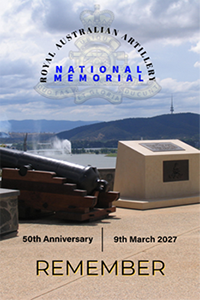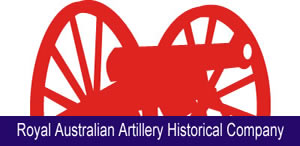|
||||||||||||||||||||||||||||||||||||||||||||||||||||||||||||||||||||||||||||||||||
| Have a Question / Feedback ? | Submit- only questions about this website will be answered | Search Our Site |
|
|
||||||||||||||||||||||||||||||||||||||||||||
The history of artillery in Australia began with the arrival of the First Fleet in 1788 when cannon were off-loaded from HMS Sirius and positioned around Sydney Cove to protect the fledgling settlement. A number of forts were erected in the years that followed and field guns were available to be transported to support troops where required. The guns were manned by the Imperial troops and it was not until 1856 that the first Royal Artillery unit arrived in Australia. These had been requested on many occasions as the operation of the coastal guns required some expertise which the infantry troops lacked. When the Crimean War began in 1854 the people in Australia were fearful that the Russians would attack them and authorisation was given to raise volunteer forces to help the Imperial troops. A battery of artillery was raised in Sydney and the same year others were raised in Victoria and South Australia. Volunteer artillery units were raised in Tasmania (1859), Queensland (1862) and Western Australia (1872). With the departure of the Imperial troops from all the Australian colonies in 1870, local defence became the responsibility of each Colony. Victoria was the first to raise a permanent artillery unit under Captain Stubbs and Battery Sergeant Major Downs; the unit was disbanded in 1880). New South Wales was next and a battery was raised on 1 August 1871 under Captain Airey and Battery Sergeant Major Green. This unit continues in the Australian Army today and is the longest serving permanent unit in the Australian Army. The permanent units were raised to man the many forts then in existence. They were assisted by the numerous volunteer coastal and mobile field batteries. In 1885 the New South Wales government offered the service of troops to the Imperial Government to assist with an uprising in the Sudan. A battery was included and they became the first artillery unit from Australia to be deployed overseas on active service. In the same year a School of Gunnery was established at Middle Head in Sydney to provide instruction on the technical aspects of gunnery. British officers, Bingham and Bunbury were brought out to establish the School which opened in September 1885. Several other Colonies sent students to attend the courses and as such this is perhaps the first Federated undertaking by all the Colonies. On 24 August 1899 the permanent artillery of New South Wales, Victoria and Queensland joined to form Regiments of the Royal Australian Artillery. This was seventeen months before Federation. Australia became a Federation on 1 January 1901 and on 1 March 1901 the Commonwealth Ministry of Defence took control of all Colonial forces. A Battery, New South Wales Artillery was on active service in South Africa during the Boer War. The title Royal was exclusive to the permanent gunners who formed both Field Batteries and Garrison Companies (Coastal). The volunteers, now called militia, also formed field and garrison units. During World War I Australia contributed 82 batteries of artillery and saw service at Gallipoli, France and Belgium. In 1937, in recognition of the service provided in World War I the militia units were granted the title Royal. During World War II the artillery expanded rapidly and was possibly the largest arm of the Army with field, coastal, anti-aircraft, anti-tank, survey and searchlight units being raised for service in Australia, the Middle East, Near East and Islands. In 1948 Australia raised a permanent Army and the artillery has been an integral part of it ever since. The Militia continued to become the Citizen Military Force and now Army Reserve. Together they continue to uphold the long traditions of artillery in the Australian Defence Force. They have served in Malaya, Vietnam, Iraq, Timor, Afganistan and peacekeeping missions. The motto of the Royal Australian Artillery is Quo Fas Et Gloria Ducunt - Where Right and Glory Lead. Their Battle Honour is Ubique - Everywhere Colour Patch Royal Australian Artillery |
||||||||||||||||||||||||||||||||||||||||||||
Everywhere Whither Right and Glory Lead |
||||




